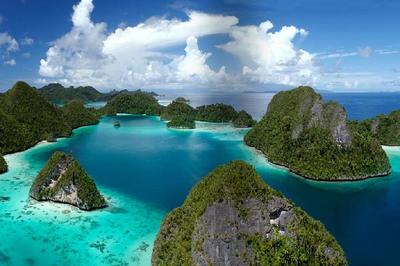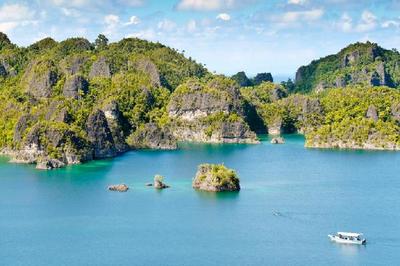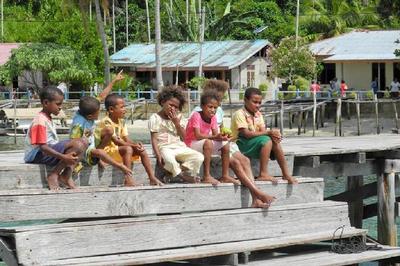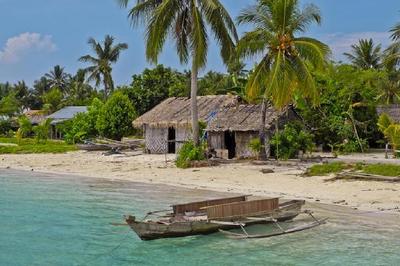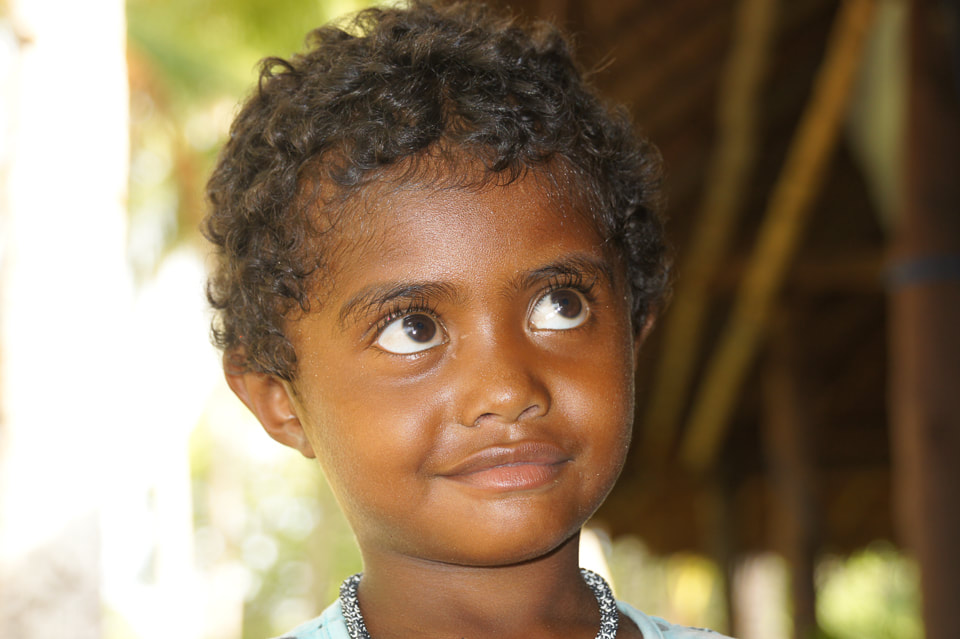Raja Ampat casts a spell on all those who visit...
Raja Ampat |
|
|
Raja Ampat translates as «four kings» and describes the four groups of islands around the Bird's Head Peninsula of West Papua in Indonesia: Waigeo in the North, Batanta, Salawati and Misool to the South. Raja Ampat belongs to the province of West Papua which is the most eastern province of Indonesia. The capital Waisai is located on Waigeo.
|
The Bird's Head Peninsula
The Bird's Head Peninsula forms the north-western end of the island of New Guinea. To the east is Cenderawasih Bay and to the south Bintuni Bay. To the west, across the Dampier Strait, lies Waigeo island of Raja Ampat, and Batanta island is located just off the northwest tip. The peninsula south is Bomberai Peninsula.
The Bird's Head peninsula measures around 200 by 300 kilometers and is bio-geographically diverse, containing coastal plains to the south. The Arfak Mountains are a 3000 meters high mountain range that is found in the east. Slightly shorter than the Arfak Mountains, the Tamrau Mountains, are found in the north. The highest mountain on the Bird's Head Peninsula is Pegunungan Arfak. It is 2920 meters high and is located 38 kilometers southwest of Manokwari.
Alfred Russel Wallace"If we look at a globe or a map of the eastern hemisphere, we shall perceive between Asia and Australia a number of large and small islands, forming a connected group distinct from those great masses of land and having little connection with either of them.
Situated upon the Equator, and bathed in the tepid water of the great tropical Oceans, this region enjoys a climate more uniformly hot and moist than almost any other part of the globe, and teems with natural productions which are elsewhere unknown." Alfred Russel Wallace, 'The Malay Archipelago', 1869
|
This is how Alfred Russel Wallace’s seminal book "The Malay Archipelago" begins, which was first published in 1869 (Wallace, 1869) and became one of the foundations of modern bio-geography. Wallace, concurrently with Darwin, looked for an interpretation of modern faunal distributions in the light of past evolutionary events.
The Landscape of Raja Ampat
In an area of roughly 50'000 sq km, Raja Ampat comprises a unique labyrinth of more than 1'200 islands and rocky outcrops which protrude from calm, turquoise water. The karst topography is characterized by mushroom islands, cones, caves, fissures and ridges, eroded by winds and tides over time. The limestone islands are covered with lush rain forest right down to the water's edge. The area is a fascinating mélange of natural wonders, both above and below the water.
The Inhabitants of Raja Ampat
Surrounded by tranquility and nourished by fish and sago palms, the people of this remote archipelago have been living apart from the world for half an eternity. It is a world sparsely populated by humans, a mere 35'000 people live in around 120 widely scattered coastal villages. The inhabitants of Raja Ampat speak seven different languages and countless dialects. The majority of the people in Papua are Christians.
The Marine Life of Raja Ampat
Raja Ampat is deemed a species factory for marine life, with scientists proclaiming the bountiful reefs the benchmark against which all reefs on earth should be measured. Raja Ampat's reefs are home to 75% of all known coral species, 1'459 species of reef fish and counting. Continuously discovering new species, including sharks, shrimps and reef building corals, scientists acknowledge this region to be the earth's richest seascape. Conservation is active in Marine Protected Areas throughout Raja Ampat, and some areas are even protected by a no-take zone.
Raja Ampat is not only about diversity of species, but also of habitats. Colorful soft and hard coral gardens, walls and slopes, sea grass beds, blue water mangroves, caves and caverns, muck critters, adrenaline filled drift dives, crystal-clear water, wrecks, jelly fish bays and superbly fishy reefs.
From Giant Manta rays to tiny Pygmy seahorses, Raja Ampat has it all and the dive resort Raja4Divers is the place to stay!
Raja Ampat is not only about diversity of species, but also of habitats. Colorful soft and hard coral gardens, walls and slopes, sea grass beds, blue water mangroves, caves and caverns, muck critters, adrenaline filled drift dives, crystal-clear water, wrecks, jelly fish bays and superbly fishy reefs.
From Giant Manta rays to tiny Pygmy seahorses, Raja Ampat has it all and the dive resort Raja4Divers is the place to stay!
Health
Malaria and also Dengue is present in Papua. The use of mosquito repellent is highly recommended, especially when passing through populous areas such as Sorong. The risk is minimized by wearing long bright clothing, especially at dawn and dusk. Bear in mind that some malarial prophylactics cause adverse reactions in divers, e.g. Lariam (Mefloquine), so please discuss your travel plans with your doctor/travel clinic.
Raja4Divers offers mosquito repellent and mosquito nets in all bungalows.
There are no compulsory vaccinations for the area. For recommended vaccinations and medication, please contact your doctor.
Raja4Divers offers mosquito repellent and mosquito nets in all bungalows.
There are no compulsory vaccinations for the area. For recommended vaccinations and medication, please contact your doctor.



